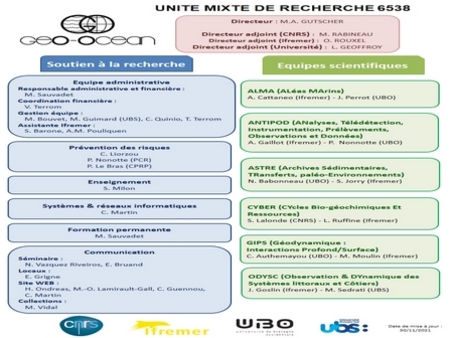Extraction techniques
The extraction of marine aggregates in France is mainly carried out with specific dredger vessels, avoiding the need for a permanent exploitation platform at sea.
The dredgers are generally equipped to extract to a depth of about 30 metres. The loading capacity of sand ships is between 1,000 and 8,500 m3 and it takes an average of two hours of presence on-site to extract and fill the hold.
When the vessel arrives within the extraction site, it slows down and deploys its dredge pump, while continuing its course at low speed (2 to 4 km/h), until it reaches the seabed.
The dredge pump scrapes the bottom and sucks up a run-of-mine mixture of water, sand and gravel, up and down the vessel’s hold through a pumping system. The water seeps through the hold at the bottom of the ship or by overflow. This discharges fine-grained materials (fine sand and clay) which return to the sea, forming a "turbid plume". The continuous passage of the trailing pipe on the seabed creates regular parallel or sub-parallel medium-deep grooves, depending on the type of equipment used and dredging conditions (usually 1 to 2 metres wide for 0.3 to 0.5 metres deep).
The content of the hold is unloaded on the quayside either hydraulically or by dry unloading. In the first case, the cargo is remobilized in the form of pulp to be pumped into basins near the processing facilities. This is the fastest method of unloading (2 to 3 hours for 1,500 to 3,000 m3 ) and is reserved for sandy sediments. In the second case, the material is unloaded by conveyor belt
The second type of sand ship, the traditional clamshell dredge, is currently only used on two deposits in France. This system, which requires a long loading time, is suitable only for use near the coast and in shallow depths (around 10 m) and remains dependent on weather conditions (Augris & Cressard, 1984). This type of machine operates at a fixed point using a grab operated by a load mast or a crane operating a claw (Béranger et al., 1996). A clamshell dredge can work to depths of 30 metres (Alzieu 1999). It does not permit regular dredging but creates a succession of excavations on the bottom, the spacing of which varies according to the depth (Augris & Cressard, 1984; Sornin-Petit, 1996).

